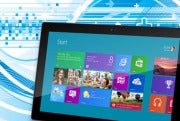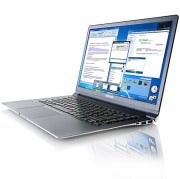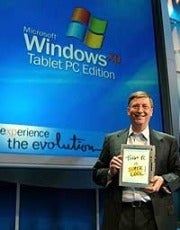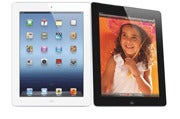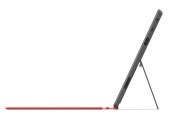The new device, unveiled by Microsoft Chief Executive Steve Ballmer at an event for journalists here, is a sign of the new tactics the software giant has been forced to embrace as it tries to make up lost ground in the mobile market.
What We Don't Know
While Microsoft revealed some of its specs for the Surface tablet, there are still many unanswered questions. Here are some of the biggest..The Surface has a built-in kickstand and magnetic cover, which also acts as a touch keyboard. Microsoft didn't say whether the device would connect to cellular data networks or would be Wi-Fi only.
Interactive: The Surface Tablet
Explore the tablet's features and specs.Photos: Microsoft's Event
Microsoft's Hardware Efforts
Microsoft didn't identify contractors who will manufacture the hardware, or provide much clarity on timing—except to say that the first Surface models will arrive when Windows 8 is generally available, which is expected to be in the second half of the year.
Mr. Ballmer styled the new tablet device as a vehicle to exploit its forthcoming Windows 8 operating system, and a variant called Windows RT that relies on different kinds of computer chips. The software is the first from Microsoft designed with tablet computers in mind, offering an interface called Metro that is designed to be controlled by a user touching a display.
Mr. Ballmer and other Microsoft executives repeatedly use the words "no compromises" to describe the tablet computers they envision running Windows 8 and Windows RT—which means that users will be able to use work-oriented tools like Microsoft Word and Excel programs, not just be used for watching movies and surfing the Web.
Microsoft also emphasized the use of the Surface with a keyboard, a convertible usage model that the company has helped champion and Apple has publicly discounted.
"The Surface is a PC, the Surface is a tablet and the Surface is something new that we think people will really love," Mr. Ballmer said in wrapping up the event, which lasted less than one hour.
Al Hilwa, an analyst at IDC, said the combination of PC and tablet features makes surface a "true converged" device. "A Swiss Army knife of a tablet?"
Microsoft's involvement with tablet-style computing goes back more than three decades, supplying software to companies for products designed to be activated with a pen-style device. But those machines failed to gain wide acceptance. The Surface, and the new versions of Windows, are an attempt to emulate the touch-based interaction that Apple popularized with the iPhone and iPad.
The company also used the name Surface for a tabletop computer it first demonstrated several years ago.
Microsoft executives said the company's decision to make a homegrown tablet computer fits with the history of Microsoft making hardware when it is needed to bolster the company's software, such as Microsoft's making one of the earliest computer mouses.
But by making its own tablet, Microsoft also risks taking sales away from a coming crop of Windows-powered tablets from its own allies. Microsoft traditionally has left the making of computers to partners such as Dell Inc., DELL -0.39% Hewlett-Packard Co. HPQ -0.39% and Lenovo Group Ltd. 0992.HK -1.00% Microsoft treading on the hardware-makers turf threatens to strain that long-standing business arrangement.
The computer makers' business is dependent on Microsoft, so they may not express annoyance publicly at Microsoft's trading on the hardware makers' turf. But at least some hardware executives are fuming privately at Microsoft's decision.
Microsoft's move to make its own tablet "comes with consequences, which is complicating choices for consumers and complicating relations with third-party manufacturers," said Sarah Rotman Epps, an analyst with Forrester Research Inc.
Mr. Ballmer sought to underscore Microsoft's long-standing and continued tight alliances with hardware companies. "Those partnerships are essential to the reimagination of Windows," Mr. Ballmer said.
Representatives of Dell, Apple and H-P had no immediate comment.
Microsoft showed off the two versions of the Surface. The versions running Windows 8 will run chips from Intel Corp., which supplies chips used in most PCs. The versions running Windows RT will be powered by chips from Nvidia Corp. based on designs from ARM Holdings PLC, a variety of chips widely used in cellphones and tablets.
![[surface]](http://si.wsj.net/public/resources/images/OB-TK696_surfac_A_20120618213908.jpg)

![[SB10001424052702303703004577475203434156654]](http://s.wsj.net/public/resources/images/OB-TK676_0618ms_D_20120618193937.jpg)
![[SB10001424052702303836404577475000237559144]](http://s.wsj.net/public/resources/images/OB-TK619_0618MS_D_20120618162511.jpg)



